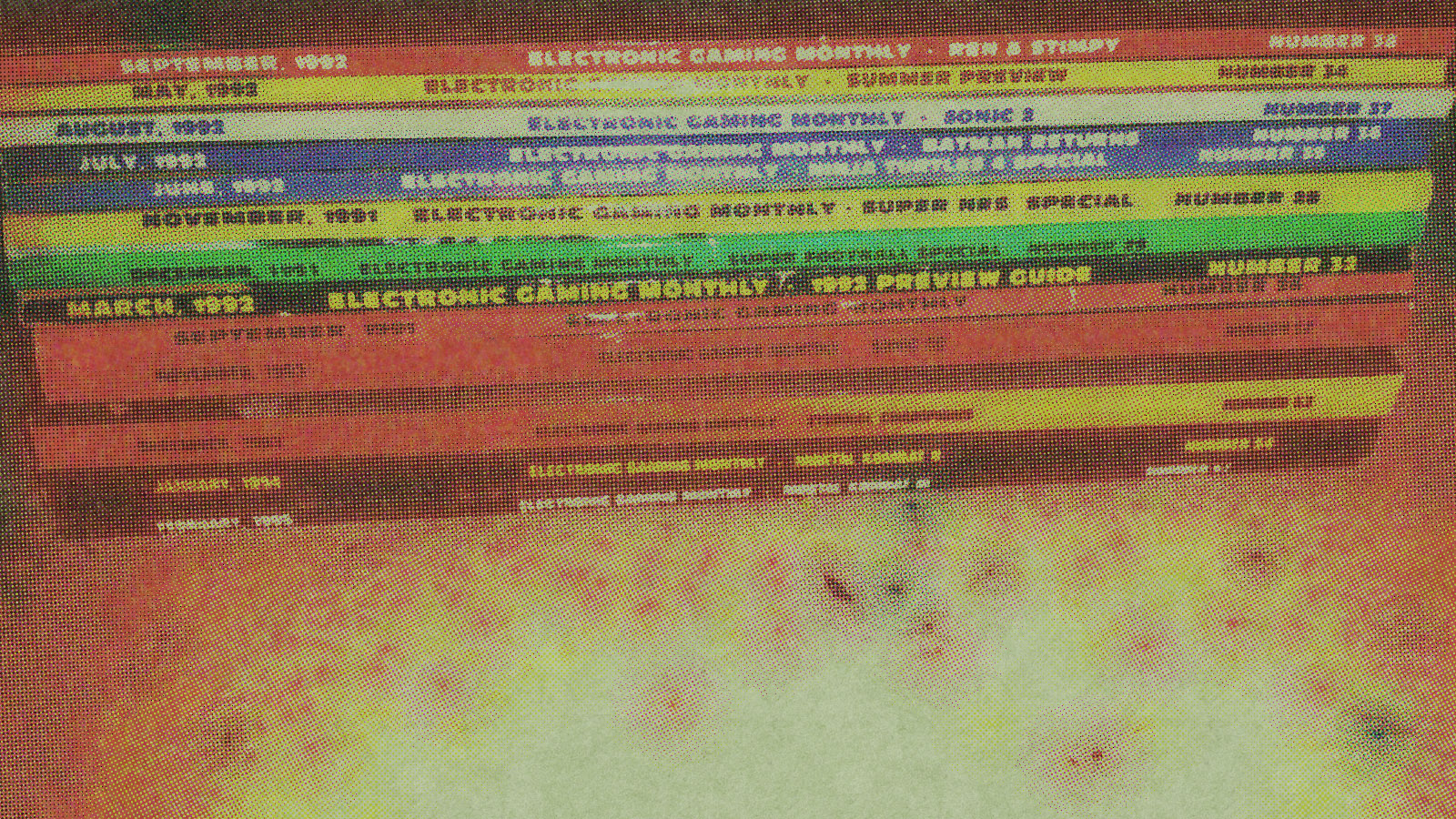
Insert Coin Here
1982—The Year in Coin‑Ops
Ah, 1982—what a year for arcaders everywhere! Never before did the coin-op gourmet encounter such a smorgasbord of electronic arcade contests. And not only were there more games, but the product was unilaterally improved in terms of sound and graphics over the output from previous years. Greater variety in terms of play mechanics was also obvious—no longer was every new game a prettied-up variation of Space Invaders, Pac-Man or Defender. Instead, we saw maze shoot-outs, climbing contests, digging games, and even two-player contests where the games co-operated to eliminate some computer-generated menace.

This proliferation of titles will probably cause the summer of ‘82 to be remembered as a “golden era” by arcaders. Even though gamers spent more money in the pleasure palaces of America, the money was split among a far greater number of titles. This will probably result in a shakeout of the weaker sisters in the industry. In other words, we may never again see as many new titles in such a short span of time. Enjoy it while you can, fellow coin-oppers!
The Japanese presence was not nearly so overwhelming in 1982, with companies such as Midway, Exidy and Williams releasing largely in-house created videogames. Atari, meanwhile, previously the number one creator of home-grown coin-ops, broke with tradition and signed an agreement with Namco (creators of Galaga, Pac-Man and Galaxian among many others) to release coin-ops created by the Japanese game wizards. The first contest to emerge from this partnership, Dig-Dug, is already looking solid in the arcades.
As a greater and greater number of games continue to compete for limited space, only the genuinely strong titles are surviving. The half-life of even the hit games grows shorter and shorter as the coin-op business comes to resemble the “hits” orientation of the music industry. Games explode on the scene,
such as Taito’s innovative but abstract Qix, then begin to fade from sight. Other excellent titles that were given short-shrift by both distributors and the gaming public include the eye-popping Kickman and the Namco-created Bosconian, both from Midway.
The greatest improvement on the coin-op scene in the past 12 months has definitely come in terms of sound and graphics. Arcaders were left goggle-eyed after seeing such visual masterpieces as Sega’s Turbo and Zaxxon. In fact, Sega capitalized on the tremendous player attraction of Zaxxon and produced the first television commercial advertising a coin-op videogame. Blending the game’s own high-resolution visuals with some dynamic animation work, the ad is a roller coaster ride full of color and excitement.
Maze games certainly maintained their popularity, with Ms. Pac-Man rating as the top earner through most of the summer. There was also a wide assortment of digging and climbing contests with multiple playfields and multi-scenario games becoming commonplace.
In these inflationary times, gamers may be among the select few consumers who actually got more for their money. Not only have players gotten better, but improved instructions, animated introductory sequences and added “lives” or turns-per-play have all increased the time a gamer spends at his or her favorite machine. Additionally, the trend toward two-token or 50¢ plays seems to have pretty much fizzled.

While Ms. Pac-Man and Zaxxon remained strong through most of the summer, several powerful contenders appeared on the scene to steal their thunder. First, Williams introduced Robotron, the third in their Defender series, in which the lone space knight actually lands on the ravaged planet in order to rescue the remaining humans and blitz the various types of alien creepies. Robotron presented arcaders with more on-screen movement than had ever been seen before. Screen RAM is the technical name for the ability of a computer to simultaneously manipulate on-screen graphic elements, and Robotron had screen-RAM coming out its ears. Swarms of aliens descend upon the hapless defender from all directions, while he blasts back at them with automatic-laser fire.
Just as the Williams classic began to take off, the Walt Disney arcade movie spectacle, “Tron”, opened across the country, sparking even greater videogame madness. Midway’s version of the computerized world of Tron combined four totally independent contests: a tank-maze shoot-out; a battle to reach the I/O Tower; a light-cycle challenge; and a confrontation with the MCP (Master Control Program). The wide variety of action and extended playing time helped boost the videogame-based-on-a-movie-based--on-videogames a healthy success.
As the year comes to a close, a new batch of titles are being hailed as the “Next Big Things”. Jungle King and Space Dungeon are both drawing excellent notices, as is Atari’s Kangaroo. The coin-op world is even abuzz with rumors concerning 3-D videogames currently being tested in Germany.
If 1982 showed us anything, it’s that the day of the Big Game may well be over. There are just too many titles around for any one machine to overwhelmingly dominate the game scene the way, for example, Pac-Man did in ‘81. It’s also clear that the me-too games are going straight down the tubes. Prettied up versions of existing games just don’t ring the bell with today’s sophisticated gamer. It’s also obvious that today’s players want more than just endless rehashes of invasion and maze games. After all, two of ‘82’s biggest hits were Atari’s Tempest and Sega’s Frogger, neither of which fit into any pre-constructed molds or categories.
The watchword is invention! As graphic and sound capabilities continue to mushroom, good, original games will be needed to take advantage of them. As home systems continue to offer ever more impressive versions of arcade games, the coin-ops are going to have to take some serious steps to remain a couple of jumps ahead.
Next issue, we’ll be back with our regular column, but we’d very much like to hear from you regarding the year 1982 in the arcades. What kind of year did you feel it was? What impressed you most? What was your biggest disappointment? We’ll be waiting.












